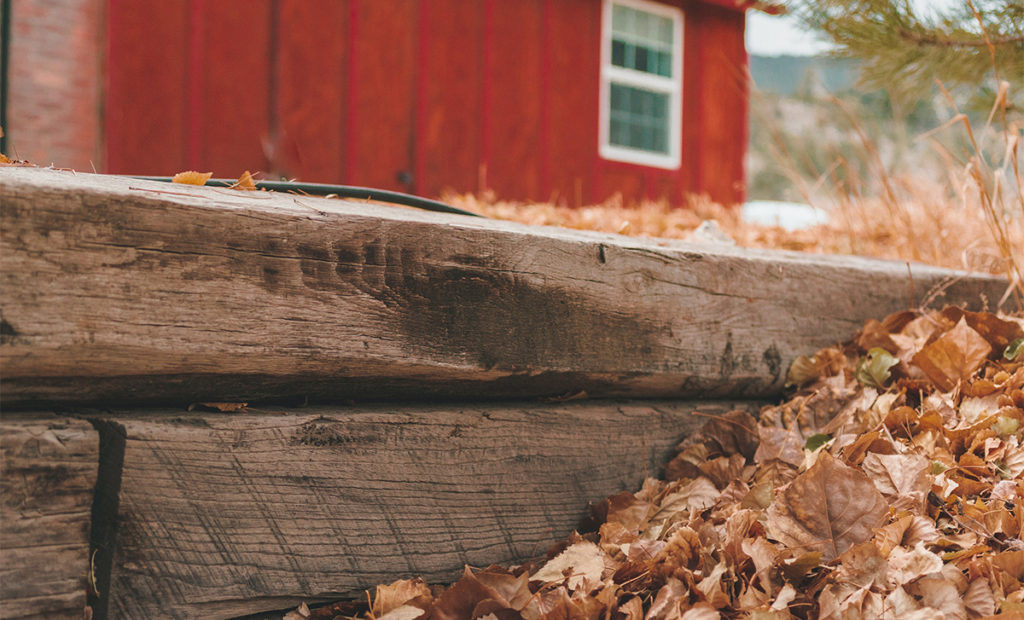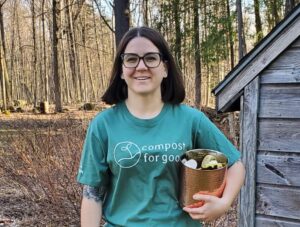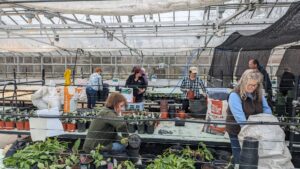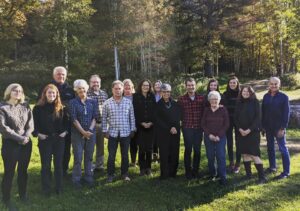When crisp autumn weather arrives, and the last flowers of the late-blooming perennials have gone, it’s easy to forget that being a pollinator steward is a year-round job. However, there is much that can be accomplished in the fall to ensure that your local pollinators will thrive in the spring and summer. While migratory pollinators such as Monarch butterflies and the Rufous hummingbird travel great distances to escape northern winters, many insect pollinators such as moths, butterflies, and bees stay right here all winter long, in a variety of developmental stages that allow them to endure the cold.
Most native bees nest as pupae overwinter and emerge the following spring or summer ready to start pollinating. Bumblebees, however, do not overwinter in their nests – bumble bee queens leave their nests in the fall and search for suitable habitats such as leaf litter or loose soil to make their winter homes. Other pollinating insects such as the Mourning Cloak butterfly overwinter as adults and spend the winter ‘frozen’ in tree cavities or beneath loose tree bark. While insect pollinators vary in their overwintering habits, they all require sheltered areas to successfully survive the winter.
Passive Strategies
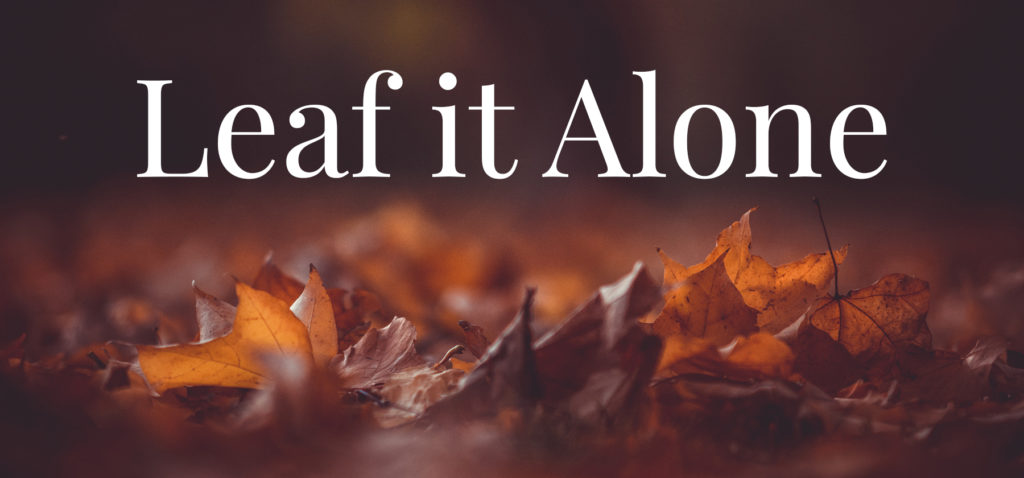
Homeowners, landscapers, and gardeners can make important decisions in the fall to create habitat for overwintering pollinators. Without this habitat, pollinators will be unable to nest properly and their life cycles will be interrupted. There are many strategies to create pollinator homes with very little effort. Instead of “putting your gardens to bed” by clearing all plant material and coating the soil with fresh mulch, allow ground cover such as leaf litter, twigs, and brush to remain. This creates a dynamic landscape that pollinators can snuggle into for the winter. Pollinators much prefer a ‘messy’ yard and garden.
Rather than raking and disposing of all the leaves in your yard, consider leaving them in place. By doing so, you can provide habitat for Comma butterflies, and insulate the soil to house underground nests for native solitary bees such as leafcutting bees or mining bees (which pollinate even more effectively than honeybees). In addition to creating pollinator habitat, this practice preserves soil moisture, suppresses weeds, helps return essential nutrients to the soil, and reduces waste in landfills.
Active Strategies
In addition to the hands-off landscaping suggestions above, there are some more active strategies that homeowners can take on to give their pollinators some extra love this fall. Start to rewild your lawn by seeding bare lawn spots with flowering ground covers such as prunella. Wildflowers (such as those in AdkAction Adirondack Pollinator Project wildflower packets) can provide nectar and pollen to foraging bees for years to come, in addition to enhancing soil nutrients, reducing erosion, and ensuring continuous ground cover.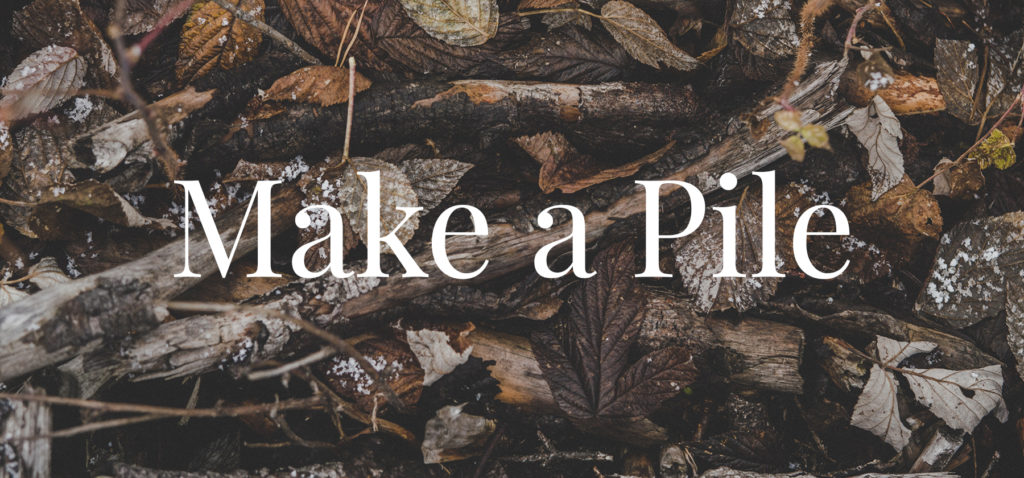
Another active way to assist overwintering bees is to collect and pile dead stems. Cut woody plants 18-20” tall to provide habitat for bees to rest in over the winter while also cleaning up your yard. Collect and pile these woody stems in an area of your yard for Red mason bees, leaf cutter bees, and wool carter bees to build nests in the hollow dry stems for fall and winter.
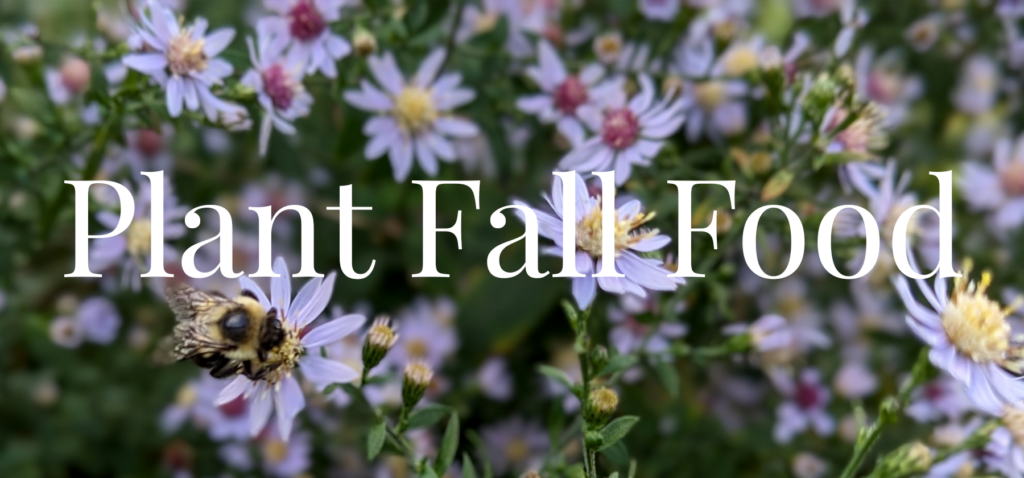
It is important to promote an abundance of pollen and nectar sources that remain accessible throughout the fall. This is crucial for pollinator survival over winter. Planting late-blooming perennials such as Aster, which provides pollen for bees and butterflies, and Sedum, which hosts the caterpillars of Gray Hairstreak butterflies and is a rich pollen source for bees, can help pollinators prepare for the long winter ahead.
There are many ways to help out your native pollinators in the fall season by both passive and active strategies alike. This fall, try out any combination of the strategies above to see what works for you.
![]()
Learn more about the Adirondack Pollinator Project.
Sources:
Miller, R. (2019). Raking leaves this fall? Stop right now. USA Today.
Godnick, M. (2020). Why you should help protect native pollinators and grow native plants. Adirondack Council.
Welch, S. (2019). Garden cleanup: how to help overwintering pollinators. Farm and Dairy.
Machesney, D. (2018). Fall garden care for pollinators. PennState Extensions.
Great Pollinator Project. (2014). Overwintering habitat. The Great Pollinator Project.
Lane, I., Watkins, E., Spivak, M., Meyer, M. (2017). Flowering bee lawns for pollinators. Bee Lab University of Minnesota.


